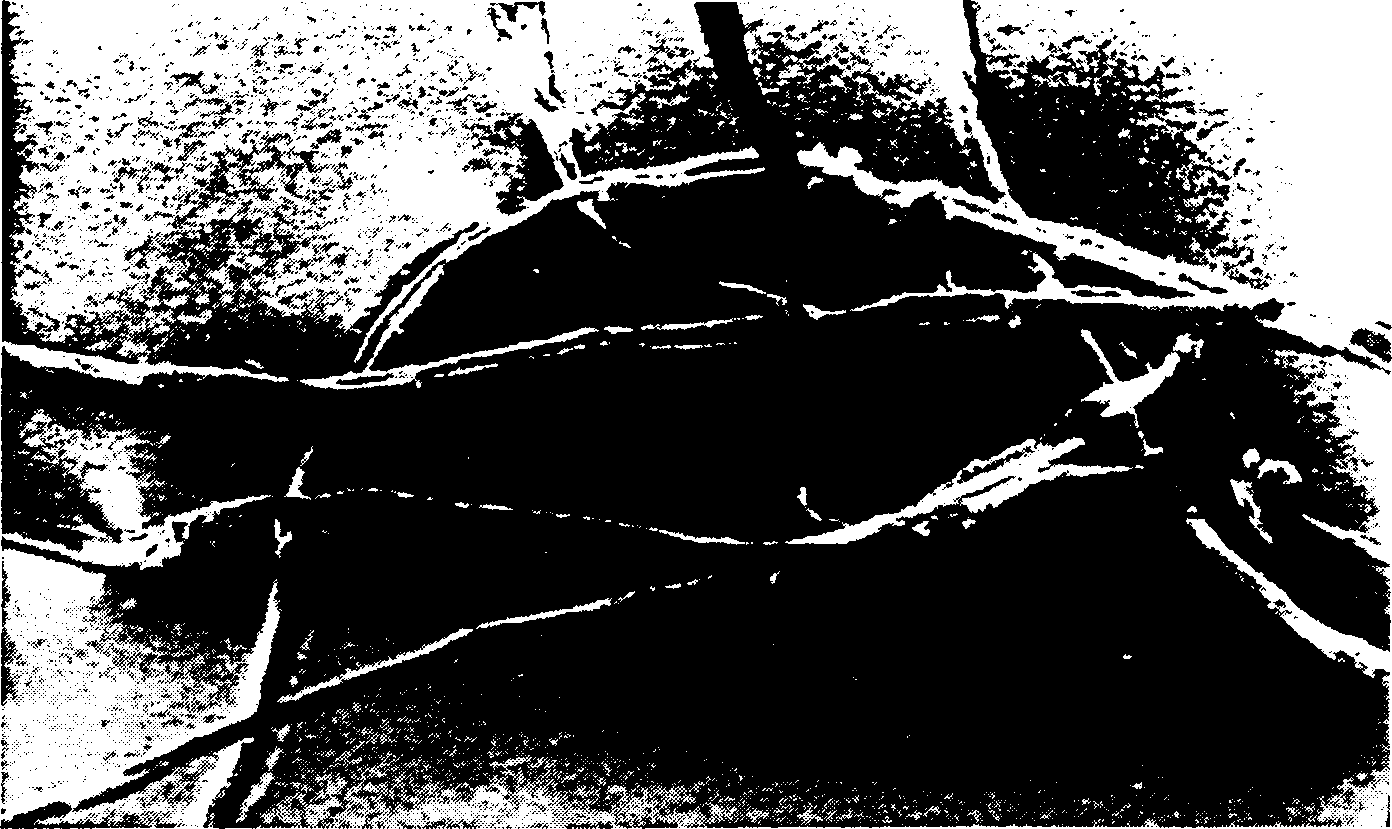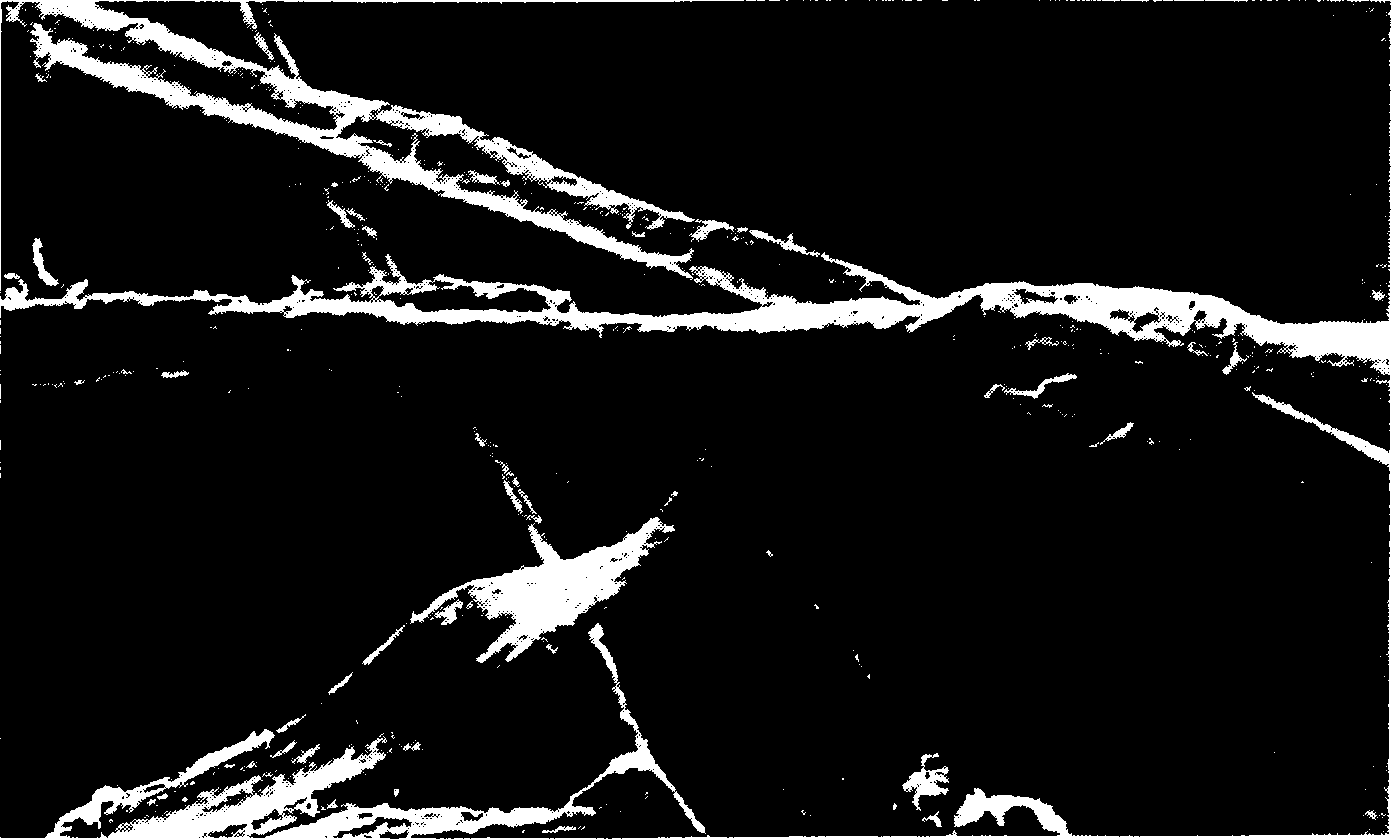Superabsorbent cellulosic fiber
A technology of cellulose fiber and cellulose sulfate, applied in cellulose pulp post-treatment, absorbent pads, fiber treatment, etc., can solve the problems of expensive, difficult to process superabsorbent fibers, and ineffectiveness
- Summary
- Abstract
- Description
- Claims
- Application Information
AI Technical Summary
Problems solved by technology
Method used
Image
Examples
Embodiment 1
[0080] Embodiment 1 prepares sulfated cellulose fiber
[0081] In this example, a representative method for preparing sulfated fibers is described.
[0082] Before sulfation, the pulp was activated with acetic acid. 10 g of fiberized bleached kraft pulped southern yellow pine fluff pulp (NB416, Weilhauser Company, Federal Way, WA), which had been oven dried at 105°C, was added to 600 mL of glacial acetic acid. Then, the pulp / acid slurry is placed in a vacuum box and the air is removed. The slurry was placed under vacuum for 30 minutes, then the vacuum box was repressurized to atmospheric pressure. The slurry was left at ambient conditions for 45 minutes, then again under vacuum for 30 minutes. After the second exposure to vacuum, the slurry was again placed at atmospheric pressure for 45 minutes. The slurry was then poured into a Buchner funnel where the pulp was collected and pressed until the residual acetic acid weight was twice the weight of the dried pulp (ie, the tot...
Embodiment 2
[0087] Example 2 Preparation of representative crosslinked sulfated cellulose fibers
[0088] In this example, a representative method for preparing crosslinked sulfated cellulose fibers is described. Cellulose sulfate fibers prepared as described in Example 1 were crosslinked with typical crosslinking agents.
[0089] A catalyzed urea-formaldehyde system was used to crosslink sulfated cellulose fibers. The catalyst included magnesium chloride and sodium dodecylbenzenesulfonate in 88% ethanol / water. In addition to its primary function, the catalyst solution also acts as a diluent for the crosslinker. The crosslinker was obtained by dissolving urea in 37% (w / w) aqueous formaldehyde. A crosslinking agent is combined with a catalyst solution and applied to the sulfated fibers. The treated fibers were then cured by placing in an oven at 105°C for 60 minutes.
[0090] In the experiments, different amounts of crosslinking agent were applied to the fibers. The consumption of th...
PUM
 Login to View More
Login to View More Abstract
Description
Claims
Application Information
 Login to View More
Login to View More - R&D
- Intellectual Property
- Life Sciences
- Materials
- Tech Scout
- Unparalleled Data Quality
- Higher Quality Content
- 60% Fewer Hallucinations
Browse by: Latest US Patents, China's latest patents, Technical Efficacy Thesaurus, Application Domain, Technology Topic, Popular Technical Reports.
© 2025 PatSnap. All rights reserved.Legal|Privacy policy|Modern Slavery Act Transparency Statement|Sitemap|About US| Contact US: help@patsnap.com



